Here’s a stat that’ll strike fear into the hearts of your sales reps and marketing team:
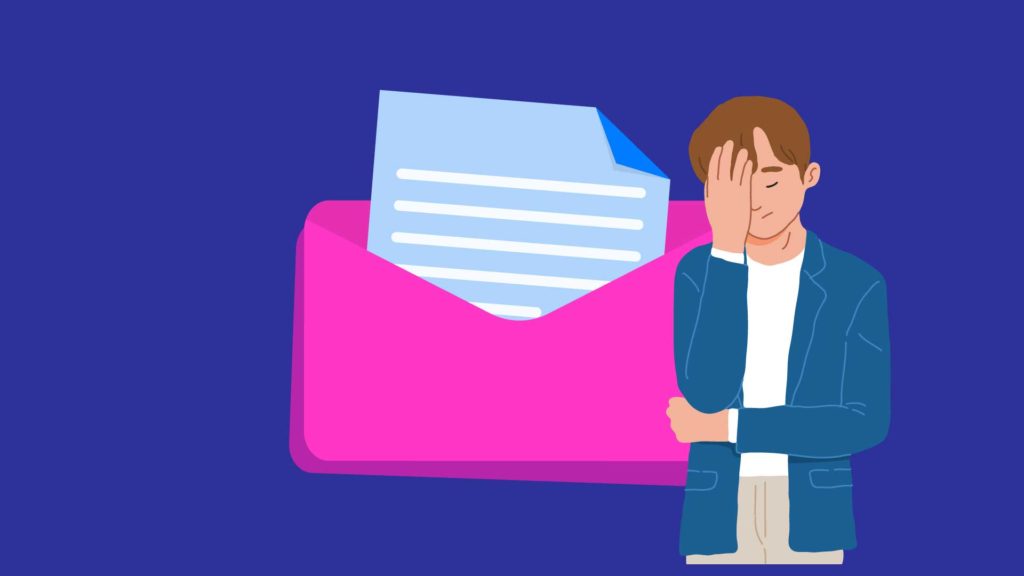
According to Backlinko, just 8.5% of outreach emails ever receive a response.
But it’s not all bad news, because emailing the same prospect multiple times results in 2X responses.
Of course, you’ll only get more responses, sales, and links if you send high-quality follow-up emails.
Which is why we’ve put together this guide to common follow-up email mistakes (and what you can do about them).
10 Mistakes In Sales Follow-up Emails
Just a reminder! The 10 mistakes listed below are the things not to do in your follow-up cold email. We gathered knowledge from our users to craft this list of mistakes and came up with solutions for you to master your follow-up strategy.
You must avoid making these mistakes at all costs if you want your cold email campaigns to succeed. Read up more on our follow-up email guide.
- Mistake #1: Having No Context In The Follow Up Email
- Mistake #2: Adding No Value In The Email
- Mistake #3: Sending Generic Follow-Up Email Templates
- Mistake #4: Not Personalizing Follow-Up Emails
- Mistake #5: Having No Call To Action
- Mistake #6: Not Enough Follow Up Sequences
- Mistake #7: Not Being Able To Prioritize
- Mistake #8: Setting Campaign at the Wrong Time
- Mistake #9: Exposing Your Custom Fields
- Mistake 10: You Haven’t Included A Unsubscribe Button
Mistake #1: Having No Context In The Follow Up Email
By 2025, the average person is expected to receive more than 375 emails a day.
With so much noise around, you can’t expect recipients to spend more than a few seconds parsing cold emails.
That means you can’t afford to send sales follow-up email messages that force the prospect to trawl back over a previous email (or multiple previous emails) to figure out what you’re talking about.
The Solution: Add Context Based On Initial Email
Simple: whenever you send a follow-up email, be sure to refer specifically to the contents of the previous email.
That way, everything they need is in one place, so you’re not asking them to do any legwork.
For example:
- Don’t say: I’m just following up on my email from last week.
- Do say: I’m just following up on my email from Tuesday 15th about booking a meeting to discuss Postaga’s AI-powered sales outreach and link-building platform.
Mistake #2: Adding No Value In The Email
Let’s make one thing clear: your prospect likely doesn’t care that they haven’t replied to you.
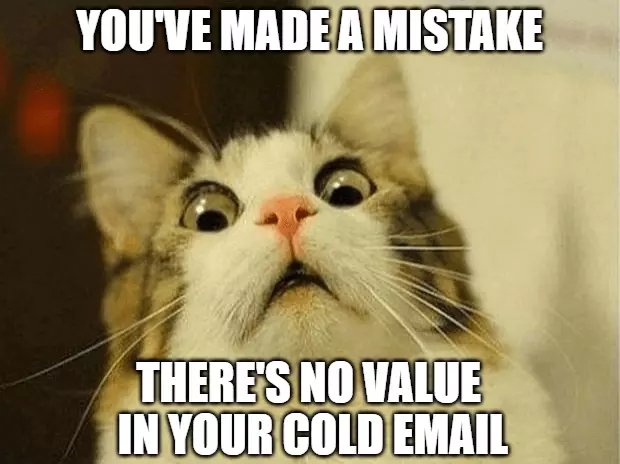
So they’re not going to appreciate a follow-up email that simply chases them for a response.
If your first message didn’t engage them enough to reply, don’t expect a more positive result from a follow-up note about “catching up” or “touching base”.
The Solution: Provide More Unique Value
This common mistake can be avoided by ensuring that every single email you send adds genuine value to potential customers or link-building prospects.
Give them something useful, or tell them something they don’t know.
That could mean:
- Giving them an insight or best practice
- Linking to an interesting survey or piece of news from their industry
- Connecting them with one of your in-house experts
- Sharing a free tool or resource
- Inviting them to a webinar
That way, you’re giving them a reason to respond, and an incentive to look out for your next email.
Mistake #3: Sending Generic Follow-Up Email Templates
How do you plan what to say in your follow-up emails?
If the answer is: “I just use the same sales follow-up email templates every time,” you’re doing it wrong.
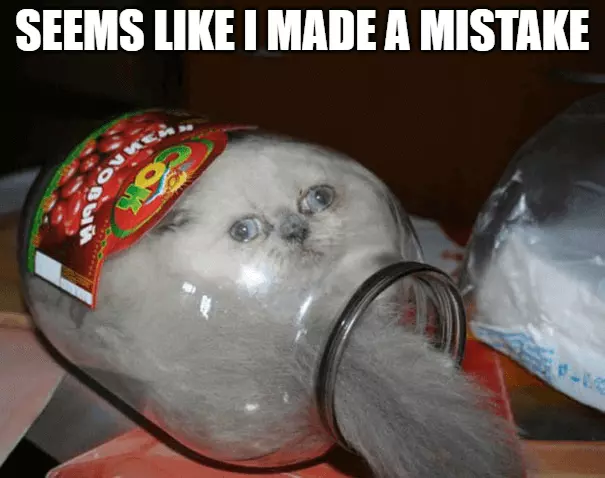
Fact is, generic templates are almost always boring.
They’re full of lazy “bizspeak” phrases like “at your earliest convenience”, which makes them seriously unengaging. You don’t want to be the person to send them their worst follow-up emails.
Don’t kid yourself; prospective customers aren’t waiting with baited breath to read your latest follow-up email.
If you send them yet another dull, templated message, you’re giving them no incentive to reply.
The Solution: Don’t Use the Same Boring Templates
Don’t be afraid to play around with the format of your follow-up emails.
Sure, you might have a general framework that’s proved successful in the past, but you should constantly strive to jazz it up with new phrasing, a little humor, or even just a different call to action (CTA).
One helpful approach is to try reading your cold emails out loud.
If it sounds like you fed your sales deck to an AI writing bot, rip it up and start again.
But if it sounds like natural speech, you’re on the right lines.
Mistake #4: Not Personalizing Follow-Up Emails
We all know the value of email personalization. Not spending enough time or effort personalizing your email is also one of the most common bad practices of SDRs.
For instance, emails are 26% more likely to be opened if they have personalized subject lines. Do give our cold email statistics article for more fun facts.
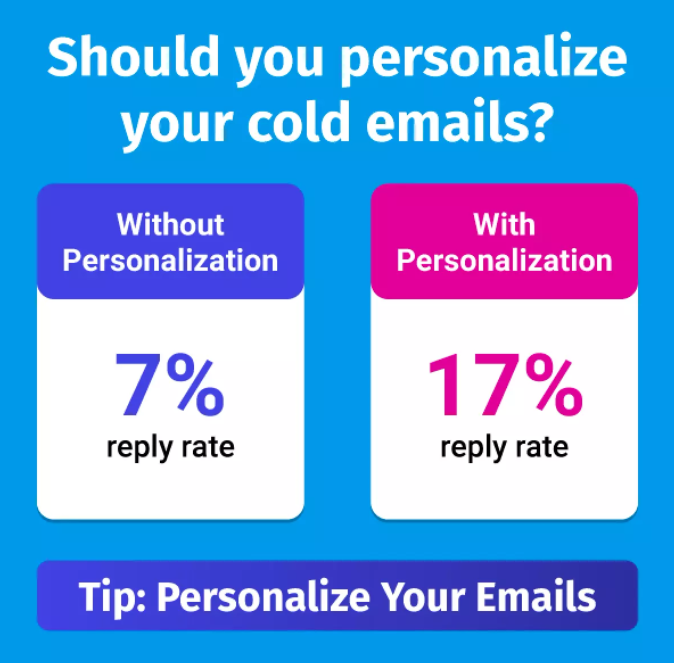
Yet despite this, one of the most common email marketing mistakes we see is failing to personalize follow-up emails.
Using follow-up email templates isn’t necessarily a problem.
But totally generic mass communication templates aren’t the solution.
Because if they didn’t reply to your original email, an impersonal follow-up is unlikely to do the job.
The Solution: Personalization is Key
Unfortunately, when it comes to planning automated follow-up emails, a lot of so-called outreach specialists simply head to HubSpot and copy/paste the first template they find.
Don’t do that.
At the very least, breathe life into your sales follow-up email templates by personalizing the opening line.
That way, you can lure them in before getting to the meat and drink of your follow-up, which will likely be pretty similar for most recipients.
Mistake #5: Having No Call To Action
We get it: you don’t want your follow-ups to come across as pushy.
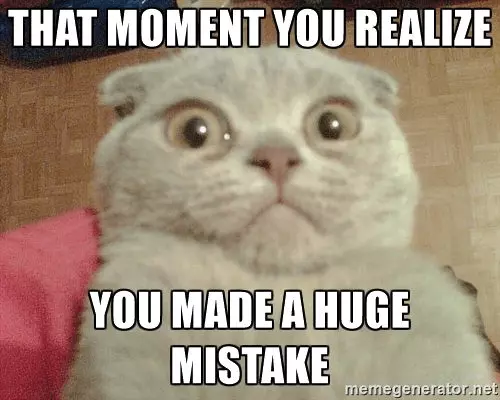
But in your quest to send professional, polite follow-up emails, you can’t afford to miss out a clear and compelling call to action.
Presumably, you have a clear action in mind for every email you send. Otherwise, why are you bothering to send them?
Spelling that action out in the form of a CTA isn’t being rude or overly salesy; it’s making life easier for the recipient.
The Solution: Add CTA
Make sure every follow-up email has a call to action based on the purpose of your original email.
Whether that’s to book an in-person meeting, arrange a video call, or link to a piece of content, be sure to spell it out clearly.
In the case of meeting-based actions, always include a calendar link — and check it’s working properly before you hit send!
Mistake #6: Not Enough Follow-Up Sequences
We already know that sending one follow-up email improves response rates vs. sending no follow-ups.
But why stop at one?
Yesware analyzed 500,000 sales emails and discovered, unsurprisingly, that the more follow-ups you send, the more likely you are to get a reply.
There’s no real mystery to this.
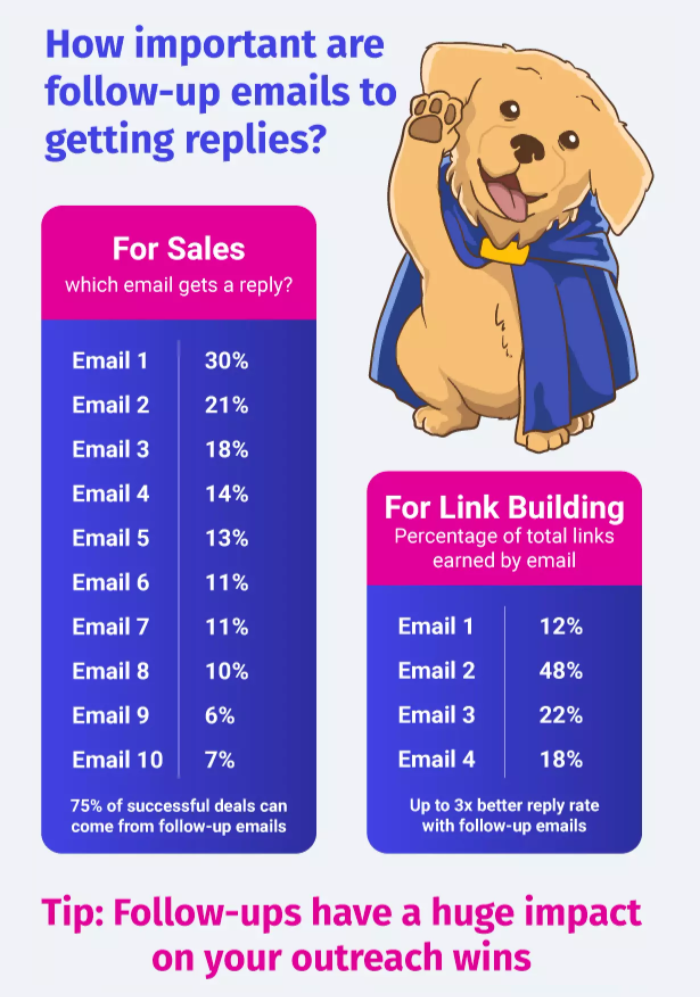
Every time you send an email, you’re giving the recipient a chance to respond.
So while reply rates (generally) tail off as the volume of follow-ups increases, it’s all a numbers game.
The Solution: Add More Than One Follow Emails
As a rule of thumb, we recommend including three to seven follow-ups in any cold email campaign.
For instance, at Postaga, our sales email campaigns include five follow-up emails, while our link-building sequence looks like this:
- Initial email
- First follow-up email: Sent four days later
- Second follow-up: After another four days
- Third follow-up: Wait a further four days
- Final follow-up: Six days later
That means you should be planning out the content of your automatic follow-ups during the campaign planning phase to ensure a clear flow from one message to the next.
Mistake #7: Not Prioritizing Follow-Up Emails
Okay, so we’re agreed that sending multiple follow-up emails is smart.
But volume isn’t the only issue here.
If you don’t make follow-up emails a priority (and you’re not sending automated follow-up emails), it can be all too easy to wait a week or two before sending your first follow-up.
That’s almost certainly too late.
I can barely remember what I did this morning, let alone last week.
So there’s virtually no chance your prospect will remember your original email if you wait a week or more to follow up.
The Solution: Keep Your Eyes Wide Open
Different audiences (and people) behave in different ways and have different preferences.
Some might appreciate being chased up a day later; others would rather be given a bit of space.
So don’t rely on generalist advice or benchmarks to plan the timing of your follow-up sequence.
Instead, keep a close eye on your campaign metrics and CRM to understand the ideal window to send follow-ups — the timeframe that gives you the best chance of getting a positive response. Read up more on the importance of follow-up emails.
Mistake #8: Setting Campaign at the Wrong Time
One of the most frustratingly common email marketing mistakes is to send emails at the wrong time.
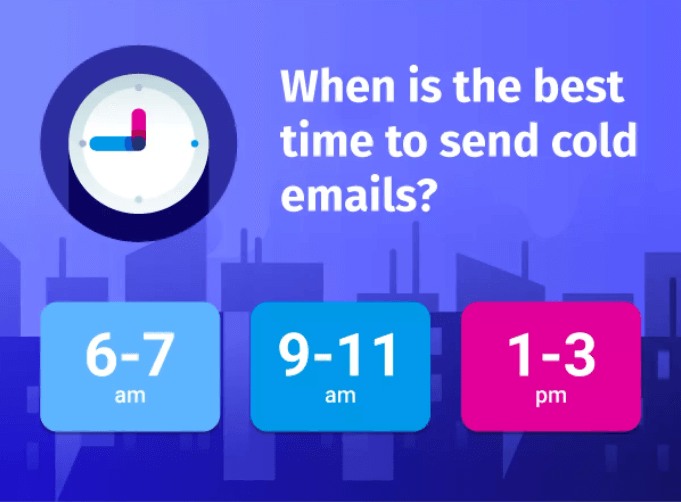
This often happens when you inadvertently use the wrong time zone in your campaigns.
The result?
Your cold emails hit prospects’ inboxes at 3am.
Inevitably, that means you get no replies.
The Solution: Segment It
One word: segmentation.
According to Mailchimp, segmented email campaigns see:
- 14% higher open rates
- 11% more unique opens
- 101% more clicks
Sure, that’s not all down to time zone.
But by segmenting your cold email campaigns on geographic location, you ensure that your automated emails arrive at a time when your prospects are most likely to read and respond.
Mistake #9: Exposing Your Custom Fields
Leaving custom fields in cold emails is seriously #cringe.
You’ve gone to all the effort of personalizing your follow-up, only for the opening line to read: “Hi {{first.name}}!”
The Solution: Double Check Before You Hit That Button
This one is easy to resolve:
Just get into the habit of sending yourself a test email before triggering a campaign.
Check whether you set the personalization fields up correctly and if there are any fields that have been left out.
Mistake 10: You Haven’t Included An Unsubscribe Button
You’ve built the perfect five to seven-step email sequence.
It’s personalized and all the fields are working as intended.
There’s a clear CTA in every email.
Surely you’re good to go?
Not if you forgot to add an unsubscribe link!
The Solution: Add Option To Opt-Out
To comply with the CAN-SPAM Act and GDPR, you must give recipients the chance to opt-out of your communications.
That could be an opt-out button or a simple text link.
Either way, if someone asks to unsubscribe, you need to remove them from your mailing list within 10 business days.
Bonus! Mistake: Confusing Prospects With Your Subject Line
Wait, there’s more!
Follow-up subject lines have a huge impact on the performance of email marketing campaigns. A lot of marketers can’t avoid common mistakes in subject lines.
So much so that nearly half of respondents decide whether or not to open an email based solely on the subject, according to OptinMonster.
As such, it can be tempting to use a different subject line in every follow-up email.
But sometimes, less is more.
The Solution: Don’t Change Cold Email Follow-Up Subject Lines
Whether you’re doing cold outreach for sales or link-building, don’t change the subject line for follow-up emails.
You’ll only risk confusing recipients.
However, in case of warm emails, writing a new subject line for every email in a sequence should actually improve performance.
Pro Tip: Take Some Time To Research & Segment
I’ve already spoken about the benefits of personalization in follow-up emails.
But personalization only truly works when you’ve taken the time to research your audience.
Research will tell you:
- Their preferred name or title (do they go by “Phil” or “Philip”?)
- The size of their company (are they a one-person operation or running a global team?)
- How long they’ve been in their role (are they a grizzled veteran or a total newbie?)
And much more besides.
Once you’ve done enough research about your prospects, you can create more meaningful audience segments that allow you to craft more personal email copy.
To Wrap It All Up
So how do you write a follow-up email? Writing high-quality follow-up emails isn’t rocket science. You don’t need to reinvent the wheel with every message.

It’s about sticking to a tried-and-trusted formula:
- Add value with every message
- Personalize every message
- Send your follow-ups at the right time
- Always include a clear CTA
By doing those four things, you’re automatically avoiding a lot of common follow-up email mistakes.
Beyond that, it’s mostly about weeding out obvious mistakes and optimizing performance.
Free 14-Day Trial
Start building relationships now with your fully-featured 14-day trial!
How We Compare
Terms | Done-For-You Terms | Privacy | Write For Us | Press
© 2024 Postaga. All Rights Reserved. Made with 
